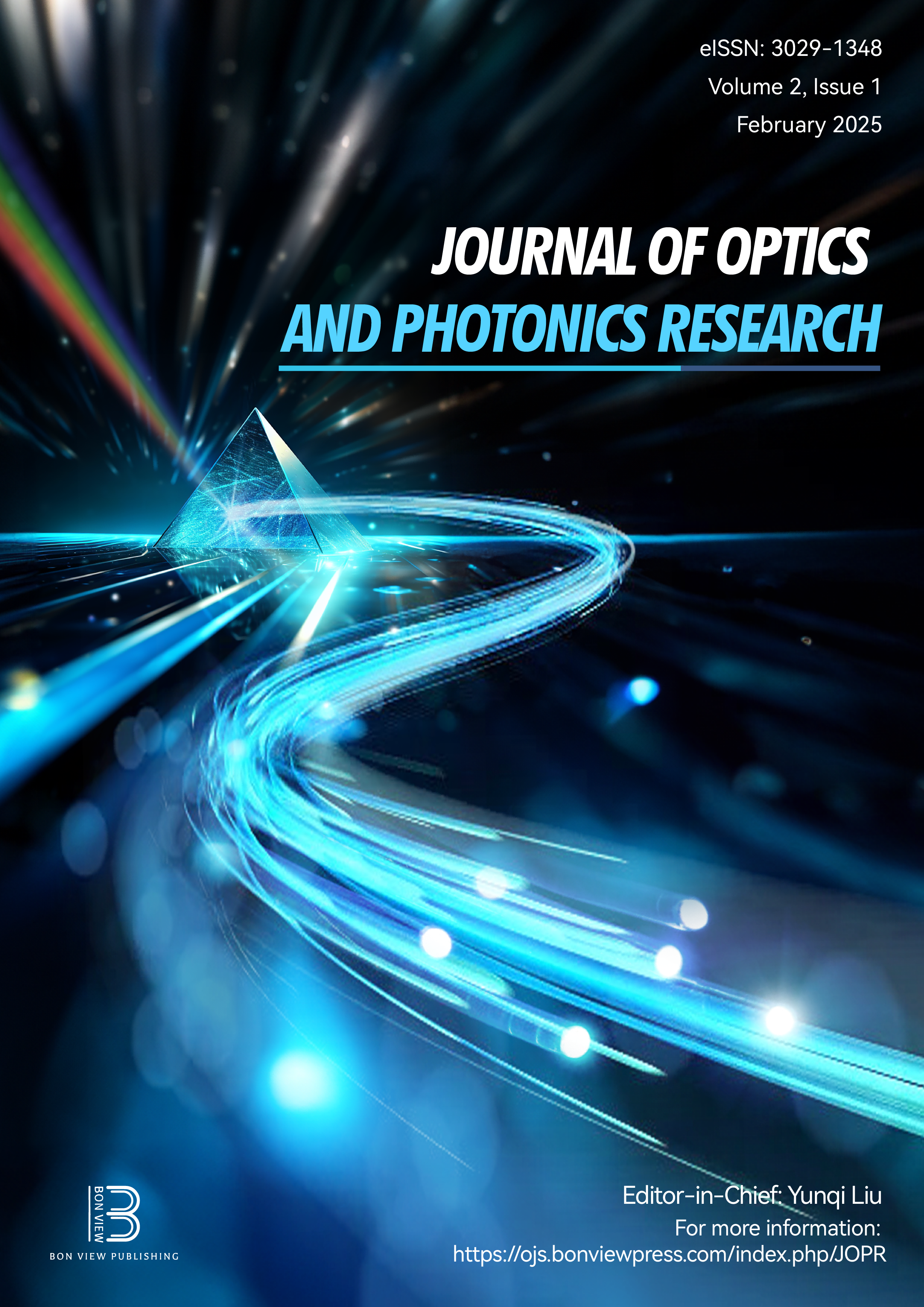Design and Demonstration of a Novel Interferometric Polarimeter for Quantitative Determination of Sugars in a Solution
DOI:
https://doi.org/10.47852/bonviewJOPR42022890Keywords:
optical interferometry, optical rotation, sugar, optically active material, interference pattern visibilityAbstract
Accurate quantification of sugar in food and pharmaceutical products is important to achieve the desired levels of sweetness, texture, flavor, and nutritional content. This article introduces a novel polarization-sensitive interferometric method for measuring the concentration of sugar in solutions. The impact of sugar concentration is investigated by analyzing the visibility of the interference pattern using a Mach-Zehnder interferometer with an interference pattern scanning and recording system. The visibility of the interference fringes is determined by cross-sectional scanning of the fringe pattern from its center over the photodetector, followed by cut-profile analysis. As the concentration of sucrose, glucose, and fructose increases, a gradual decrease in interference pattern visibility is observed, following a parabolic trend within the broader detection range of 0–14 g/50 ml. The sensor’s performance is divided into two linear regions: region-1 (0–6 g/50 ml) and region-2 (6–14 g/50 ml). In region-1, fructose exhibited the highest sensitivity of 0.0195 (g/50 ml)−1, which is 6.09 times and 1.89 times higher than glucose and sucrose, respectively. Similarly, in region-2, fructose showed a sensitivity of 0.077 (g/50 ml)−1, surpassing glucose by 3.56 times and sucrose by 2.41 times. However, sucrose achieved the lowest limit of detection of 0.0021 g/ml, which is 2.76 times and 1.71 times better than glucose and fructose, respectively. The decreasing trend in interference pattern visibility is further validated through irradiance and optical rotation measurements of the laser beam passing through the sugar solutions relative to the reference laser beam. Results from both optical techniques demonstrated good agreement, with average deviations of 1.75%, 1.72%, and 4.24% for sucrose, glucose, and fructose, respectively. The proposed technique is universally applicable for measuring the concentration of transparent, optically active solutions and has the potential to be a valuable tool for quality control and optimization in the food and pharmaceutical industries.
Received: 22 March 2024 | Revised: 31 July 2024 | Accepted: 8 November 2024
Conflicts of Interest
The authors declare that they have no conflicts of interest to this work.
Data Availability Statement
Data are available from the corresponding author upon reasonable request.
Author Contribution Statement
Rahim Ullah: Conceptualization, Methodology, Validation, Investigation, Writing - original draft, Writing - review & editing, Visualization. Raheem Dad Khan: Methodology, Investigation. Ghazanfar Hussain: Conceptualization. Rahat Ullah: Validation, Investigation, Writing - review & editing. Muhammad Faisal: Methodology, Validation.
Downloads
Published
Issue
Section
License
Copyright (c) 2024 Authors

This work is licensed under a Creative Commons Attribution 4.0 International License.


